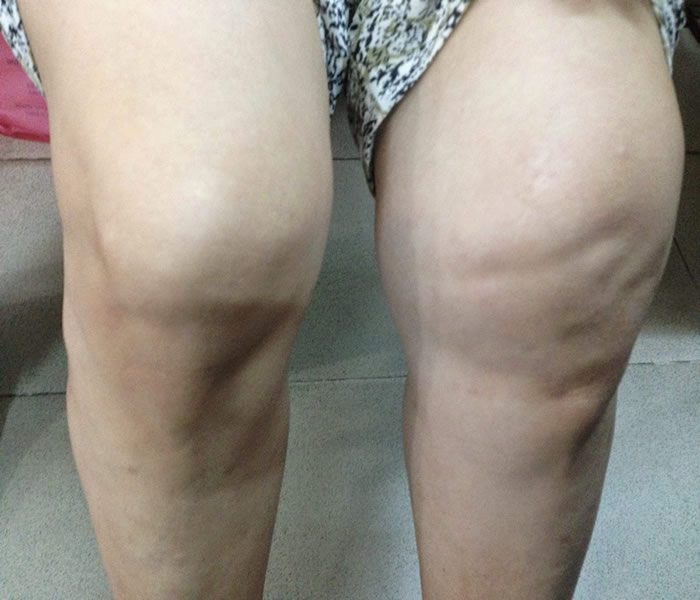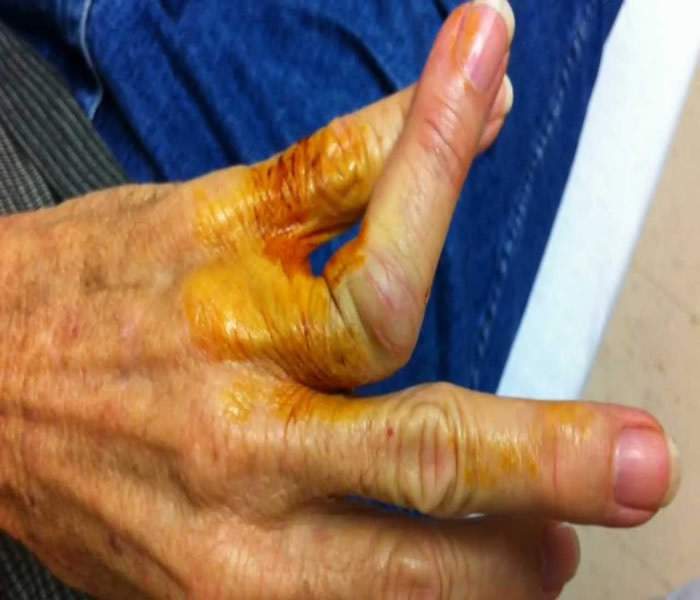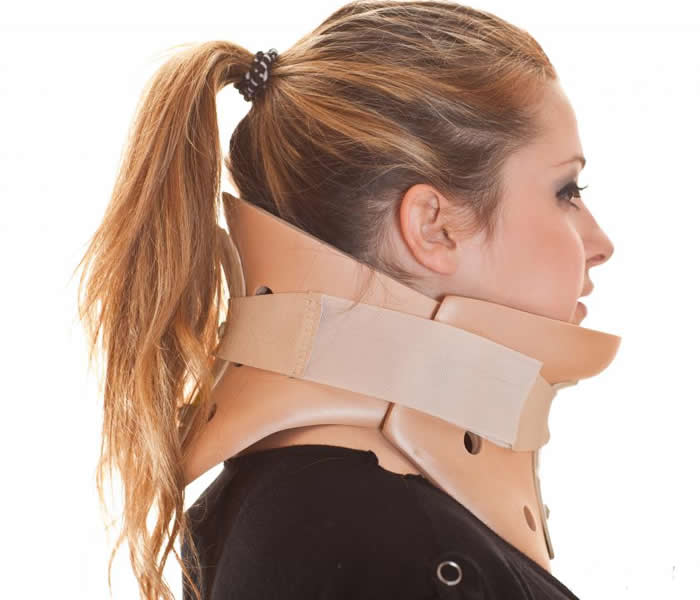Dislocation
What Is Dislocation?
A dislocation is an injury or disability caused when the normal position of a joint or other part of the body is disturbed. A dislocation occurs when a bone slips out of a joint — a place where two or more of your bones come together — in which the ends of your bones are forced from their normal positions.
Dislocation is most common in the shoulders and fingers. Other sites for dislocations include the knees elbows, hip, ankle.

Symptoms of a Dislocation
A dislocated joint may be:
- Visibly deformed or out of place
- Swollen or bruised look or discolored
- Intensely painful during movement
- Immovable or loss of motion
- Numbness around the area
- Tingling feeling
When to see a doctor
It can be difficult to tell a broken bone from a dislocated bone. If you or your child appears to have either type of injury, get medical help right away. If possible, ice the joint and keep it immobile while you're waiting for medical treatment.
Causes
Dislocations typically result when a joint experiences an unexpected or unbalanced impact.
- This might happen if you fall or experience a harsh hit to the affected area.
- Dislocations can occur in contact sports, such as football and hockey, and in sports that may involve falls, such as gymnastics and volleyball. Basketball players and football players also commonly dislocate joints in their fingers and hands by accidentally striking the ball, the ground or another player.
- A hard blow to a joint during a motor vehicle accident is another common cause of dislocation, as is landing on an outstretched arm during a fall.
Risk factors
Risk factors for a joint dislocation include:
- Susceptibility to falls -Experiencing a fall exposes you to the possibility of a dislocated joint, if you use your arms to brace for impact or if you land forcefully on a body part, such as your hip or shoulder.
- Heredity - Some people are born with ligaments that are looser and more prone to injury than those of most people.
- Sports participation - Many dislocations occur during participation in high-impact or contact sports, such as gymnastics, wrestling, basketball and football.
- Motor vehicle accidents - These are the most common cause of hip dislocations, but you can greatly reduce your risk of injury by wearing a seat belt.
- Anyone can dislocate a joint if they fall or experience some other type of trauma. However, older persons tend to have a higher risk, especially if they lack mobility or are less able to prevent falls.
- Children can also be at a greater risk for dislocations if they are unsupervised or play in an area that hasn’t been childproofed. Those who practice unsafe behavior during physical activities put themselves at higher risk for accidents such as dislocations.
Complications
Complications of a joint dislocation may include:
- Tearing of the muscles, ligaments and tendons that reinforce the injured joint
- Nerve or blood vessel damage in or around your joint
- Susceptibility to reinjury if you have a severe dislocation or repeated dislocations
- Development of arthritis in the affected joint as you age
- If ligaments or tendons that support your injured joint have been stretched or torn, or if nerves or blood vessels surrounding the joint have been damaged, you may need surgery to repair these tissues.
Tests and diagnosis
Besides physically examining your injury, your doctor may order the following:

- X-ray. An X-ray of your joint is used to confirm the dislocation and may reveal broken bones or other damage to your joint.
- MRI. Magnetic resonance imaging (MRI) can help your doctor assess damage to the soft tissue structures around a dislocated joint.
It may be difficult to determine whether your bone is broken or a dislocation has occurred. You should go to an health centre as quickly as possible.
Your doctor will examine the affected area. He will be checking circulation to the area, deformity, and whether the skin is broken. If your doctor believes that you have a broken bone or a dislocation, he will order an X-ray. On occasion, special imaging such as an MRI may be required. These imaging tools will enable your doctor to see exactly what’s going on in the joint or bone involved.
Treatments and drugs
Treatment of the dislocation depends on the site and severity of your injury and may include:
Manipulation - During this process, your doctor may try some gentle maneuvers to help your bones back into position. Depending on the amount of pain and swelling, you may need a local anesthetic or even a general anesthetic before manipulation of your bones.
Immobilization- After your bones are back in their right positions, your doctor may immobilize your joint with a splint, sling or cast for several weeks. This will prevent the joint from moving and allow the area to fully heal. How long you wear the splint or sling depends on the joint involved and the extent of damage to nerves, blood vessels and supporting tissues.
Surgery - You may need surgery if your doctor can't move your dislocated bones back into their correct positions or if the nearby blood vessels, nerves or ligaments have been damaged. Surgery may also be necessary if you have had recurring dislocations, especially of your shoulder.
To prevent redislocation, it may be necessary to reconstruct the joint and repair any damaged structures. On occasion, a joint has to be replaced, such as a hip replacement.
Medication - Most of your pain should go away after the joint returns to its proper place. However, your doctor may prescribe a pain reliever or a muscle relaxant if you’re still feeling pain.
Rehabilitation - After your splint or sling is removed, you'll begin a gradual rehabilitation program designed to restore your joint's range of motion and strength. Remember, it’s important to go slowly so you don’t reinjure yourself before the recovery is complete.
Lifestyle and home remedies
Every dislocation has its own unique healing time. Most people experience a full recovery in several weeks. For some joints, such as hips, full recovery may take several months or years and may require additional surgeries.
If your dislocation received prompt treatment, chances are that it won’t worsen into a permanent injury. However, it’s important to remember that the area will be weak and is more likely to dislocate in the future.
The healing time will also be longer if blood vessels or nerves were damaged in the dislocation. On occasion, the blood vessels that supply the bones are permanently damaged.
If the dislocation is severe or isn’t treated in time, there may be permanent problems such as persistent pain or the cell death of parts of bone around the joint.
Try these steps to help ease discomfort and encourage healing after being treated for a dislocation injury:
- Rest your dislocated joint. Don't repeat the specific action that caused your injury, and try to avoid painful movements.
- Apply ice and heat. Putting ice on your injured joint helps reduce inflammation and pain. Use a cold pack for 15 to 20 minutes at a time. For the first day or two, try to do this every couple of hours during the day. After about two or three days, when the pain and inflammation have improved, hot packs or a heating pad may help relax tightened and sore muscles. Limit heat applications to 20 minutes at a time.
- Take a pain reliever. Over-the-counter medications, such as ibuprofen (Advil, Motrin IB, others), naproxen (Aleve) or acetaminophen (Tylenol, others), may help relieve pain.
- Maintain the range of motion in your joint. After one or two days, do some gentle exercises as directed by your doctor or physical therapist to help maintain range of motion in your injured joint. Total inactivity can cause stiff joints.
Prevention
To help prevent a dislocation:

- Take precautions to avoid falls - Get your eyes checked on a regular basis, and if you're taking medications, ask your doctor if any of those drugs have the potential to make you dizzy. Also, be sure your home is well lighted and that you remove any potential tripping hazards from the areas where you walk.
- Play safely - Wear protective gear or clothing when doing physical activities, such as sports.
- Remove throw rugs from your floor, or replace them with nonskid rugs. Use nonskid mats in wet areas, such as bathrooms.
- Use handrails when going up and down staircases.
- Avoid standing on unstable items, such as chairs.
- Keep a first aid kit in the area.
- Move electrical cords off the floor.
- Avoid recurrence - Once you've dislocated a joint, you may be more susceptible to future dislocations. To avoid a recurrence, do strength and stability exercises as recommended by your doctor to improve support of your joint.
To prevent children from possible dislocations, consider practicing the following:
- Teach children safe behaviors.
- Watch and supervise children as needed.
- Ensure that your home is childproof and safe.
- Put gates on stairways to prevent falls.




